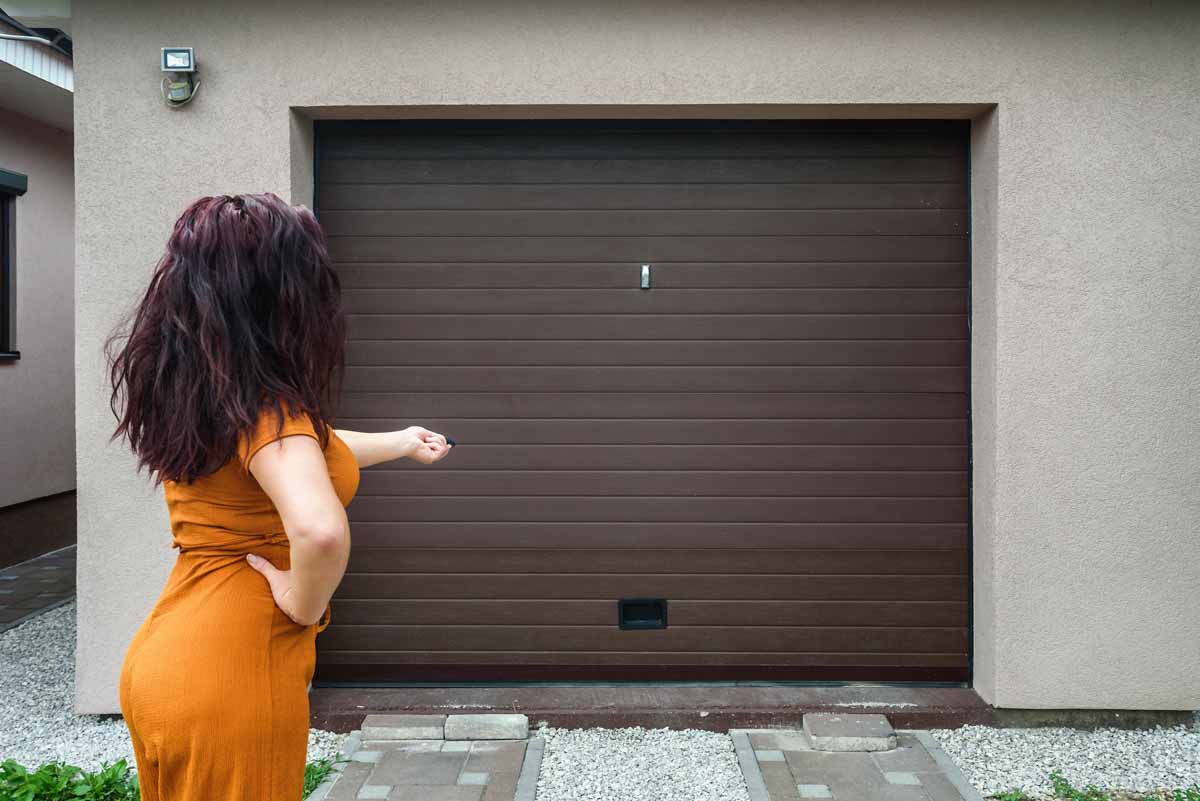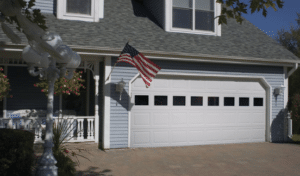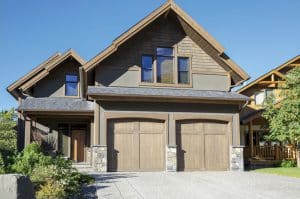Topics Covered:
Picture this: you try to open your garage door, and instead of smoothly gliding along, it shakes, screeches, or even stops partway. Sound familiar? In many cases, these hiccups stem from track alignment issues. Your garage door’s tracks guide its movement—when they’re bent, loose, or misaligned, the door can derail, literally and figuratively.
Why Track Alignment Is So Important
The track system in your garage acts like rails for a train—if those rails aren’t straight, you get a bumpy ride (or worse, a full derailment). Here’s why properly aligned tracks are crucial:
- Guiding the Door: Tracks guide the rollers attached to each door panel, ensuring a smooth up-and-down (or side-to-side) motion.
- Weight Distribution: Your door is hefty. Well-aligned tracks share the load evenly, reducing strain on rollers, hinges, and the opener.
- Safety and Security: A misaligned door can jam or come off entirely, posing safety hazards and risking potential property damage.
- Reduced Noise and Wear: When everything’s properly aligned, your door should run quietly, saving the rest of the system from undue friction.
If the tracks are out of whack, other parts of your door can face extra wear, leading to more frequent (and expensive) repairs. Keeping those tracks in tip-top shape is a cornerstone of smooth, reliable garage door performance.
Key Signs Your Garage Door Might Be Off-Track
Not sure if your issues stem from misaligned tracks? Here are some telltale signs to watch for:
- Uneven Gaps: Look at the space between the door and the track on each side. If one side has a bigger gap, it could indicate a track alignment problem.
- Loud Squeaking or Grinding: Misaligned tracks force rollers to scrape or rub, leading to unpleasant noises every time the door moves.
- Door Shaking or Jerking: A smooth door glides evenly. If yours jerks, shakes, or seems to “jump,” it may be fighting track irregularities.
- Visible Track Damage: Bends, dents, or loosened bolts on the track are prime suspects for misalignment.
- Door Leaves the Track: In severe cases, rollers actually slip out, causing the door to tilt or hang precariously. This is a major red flag demanding immediate attention.
Some of these symptoms can also stem from worn rollers or hinges, but track misalignment is often part of the puzzle—especially if the problem seems to be on one side more than the other.
Common Causes of Track Misalignment
Tracks aren’t complicated, but they endure a surprising amount of stress. Here’s what can throw them out of line:
- Accidental Impact: A bump from your car’s bumper, a child’s bike crash, or a forklift in commercial settings can bend or jolt the tracks out of place.
- Wear and Tear: Over time, bolts can loosen, brackets can shift, or rust can form if moisture is present. This gradual process can culminate in crooked tracks.
- Poor Installation: If the tracks weren’t aligned correctly during the initial setup, they may never have been quite right—and the door suffers as parts wear prematurely.
- Foundation Shifts: In some cases, if the garage floor or structure settles unevenly, it can alter track angles, especially near the bottom brackets.
Whether it’s a minor misalignment or a severe bend, early detection makes all the difference. Addressing the root cause can help prevent repeated track woes.
Why Prompt Track Repair Matters
You might be tempted to keep using a slightly off-track door if it still opens and closes (more or less). But delaying repairs can escalate your troubles:
- Safety Hazards: A derailed door can fall suddenly, putting people and property in harm’s way.
- Increased Repair Costs: As the door struggles along misaligned tracks, it often strains rollers, hinges, and the opener, potentially causing multiple component failures.
- Door Damage: Panels can bend or crack if they’re forced through a skewed track, leading to pricey replacements.
- Operation Disruption: In commercial settings, downtime from a jammed door means shipments can’t go out or come in, impacting your bottom line.
The sooner you tackle track issues, the easier (and cheaper) it typically is to fix them—keeping your door safe and functional.
Assessing Minor vs. Major Track Issues
Not every squeak or small gap calls for a complete track overhaul. Sometimes, a simple tweak can do the trick. Here’s how to distinguish minor from major track problems:
- Minor Issues:
- Light squeaking or moderate noise that goes away with lubrication.
- Tiny track bends or misalignment near the brackets that’s fixable by slightly loosening the bolts and realigning.
- A few missing or loose bolts that can be replaced or retightened without re-drilling holes.
- Major Issues:
- Significant track bends or kinks that can’t be straightened easily or safely.
- Rollers completely jumping the track, or the door tilting dangerously.
- Extensive rust or corrosion compromising the track’s structural integrity.
- Signs of misalignment caused by foundation shifts or severe impact that require deeper structural repairs.
If you’re unsure whether an issue is minor or major, it’s often wise to consult a professional. Better safe than sorry when dealing with a door that weighs hundreds of pounds!
DIY Track Alignment: Basics and Cautions
If your door is off-track but the problem appears mild, you might feel tempted to DIY a quick fix. The basic approach often involves:
- Securing the Door: Disconnect the opener (if applicable) and use clamps or locking pliers to keep the door in place.
- Loosening Track Bolts: The track is typically attached to brackets on the door frame or the ceiling (for horizontal sections). Slightly loosen the bolts so you can shift the track.
- Realigning the Track: Tap or nudge the track gently with a rubber mallet to align it with the rollers. Aim for uniform spacing along the door’s side.
- Retightening and Testing: Tighten the bolts, remove the clamps, and slowly move the door manually to ensure smooth travel.
However, keep these cautionary notes in mind:
- Don’t force a track that has a large bend or kink—this could snap or warp further.
- If springs need to be adjusted to let the door sit correctly, that’s a job for a pro. Springs under tension can be dangerous.
- Always use the correct tools and secure the door to avoid accidental movement.
When in doubt, especially if the door is heavy or the track damage is extensive, bring in an expert. Safety should be the top priority.
Professional Track Repair or Replacement: What to Expect
If you opt to hire a garage door technician (like us at RJ Garage Door Services), here’s how the track repair process typically goes:
- Inspection and Diagnosis: We’ll look at both vertical and horizontal tracks, checking for bends, loose brackets, rust, or misalignment. We’ll also inspect rollers, hinges, springs, and the door opener for related issues.
- Securing the Door and Components: We make sure the door is immobilized, preventing dangerous movement while we work on the track.
- Repairing or Replacing Track Sections: If the damage is minor, we might straighten the track and re-secure the brackets. For major damage, we’ll replace the affected track portions to ensure structural integrity.
- Realigning and Tightening: Once the track is in good shape, we align it perfectly so the rollers run smoothly, then tighten all bolts. Adjusting track spacing for consistent clearance is crucial.
- Final Testing: We run the door multiple times, both manually and with the opener engaged, to confirm everything moves quietly and consistently.
Most track repairs can be done within a single service visit, though severe cases may require additional parts or scheduling. Either way, you’ll typically get a safer, quieter door with a new lease on life.
The Impact on Door Lifespan and Safety
Why go through all this trouble to fix a crooked track? Because the benefits are huge for both your door’s lifespan and your peace of mind:
- Less Strain on Other Parts: When the track is aligned, rollers glide with minimal friction, reducing stress on hinges, cables, and the opener.
- Fewer Sudden Breakdowns: A door that’s constantly fighting a misalignment is more likely to experience roller pop-outs, snapped cables, or hinge failures.
- Quiet, Efficient Operation: Proper alignment cuts down on squeaks and grinding, making your door function more smoothly and quietly.
- Safer Environment: A derailed or jamming door can injure users or damage vehicles. Proper track alignment drastically lowers that risk.
According to the International Door Association, regular track checks are among the top ways to extend a door’s lifespan, potentially adding years of reliable service.
Routine Maintenance to Prevent Track Issues
Want to avoid track misalignment in the first place? Here are some simple but effective preventive steps:
- Check Bolts and Brackets: Every few months, see if track brackets are snugly secured. Vibrations can loosen hardware over time.
- Keep Tracks Clean: Remove debris, spider webs, or dust buildup. A soft brush or cloth can do wonders for smooth roller travel.
- Lubricate Rollers and Hinges: Use a silicone-based lubricant on the rollers’ bearings and hinges, reducing friction that might tug on the tracks.
- Stay Alert for Odd Noises: Squeaks and grinding often precede bigger alignment problems. Investigate early, so you don’t end up with a major repair.
- Protect the Door Area: In commercial settings, add barriers or signage to minimize accidental impacts from forklifts or vehicles. For residential doors, be mindful when parking or storing large items near the track.
With just a bit of ongoing care, you can catch minor shifts before they grow into full-blown issues that affect the entire door system.
How RJ Garage Door Services Can Help
If you’re in the Raleigh area and suspect a track misalignment—or want a pro to confirm your suspicions—RJ Garage Door Services is here for you. We offer:
- Expert Diagnostics: We quickly identify whether the track alone is the culprit or if rollers, hinges, or springs also need attention.
- Skilled Repairs: From gently realigning minor bends to swapping out severely damaged track sections, we do it all with precision.
- Quality Parts: If replacements are required, we use durable, industry-standard tracks and hardware designed to withstand regular door cycles in Raleigh’s climate.
- Transparent Quotes: We believe in clear, upfront pricing, so you know exactly what the repair will cost and why.
Most importantly, our goal is to minimize any disruption to your routine—whether that’s ensuring your family can get in and out easily or keeping a busy commercial warehouse running at full capacity.
Wrapping Up
A smoothly operating garage door isn’t just about convenience—it’s about safety, efficiency, and peace of mind. When tracks are misaligned or damaged, your door struggles, other components can wear out faster, and there’s a heightened risk of accidents. Recognizing the warning signs—like unusual noise, wobbling, or visible bends—lets you address track problems early, often with simple adjustments rather than extensive repairs.
If you catch a minor misalignment, a basic DIY approach could suffice. But if your door is significantly off-track, or if you’re worried about spring tension and potential hazards, it’s best to call in the experts. And if you’re local to Raleigh, don’t hesitate to reach out to us at RJ Garage Door Services. We’re here to provide the right fixes for your specific situation—making sure your overhead door is back on track (literally) in no time.




